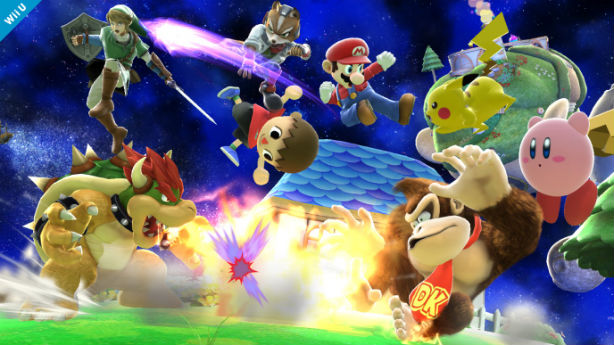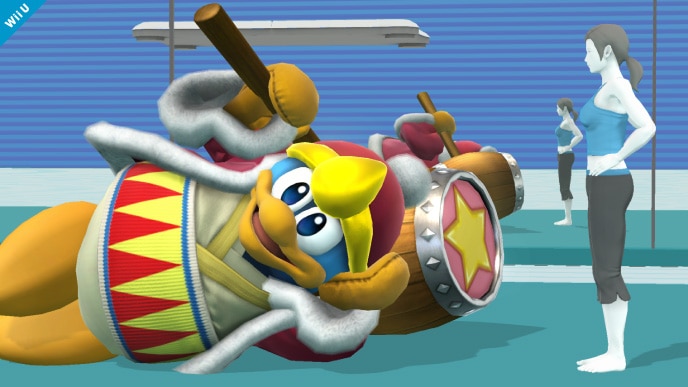Game sequels are usually the inverse of movie sequels. Game sequels are generally better than their predecessor (with exceptions, of course) because game developers, at that point, usually have better and newer technology, better funding if the previous game was a success, and better familiarity with which mechanics work in a game and which don’t (thanks, consumer feedback). Moreover, players find it much more palatable that mechanics be familiar (especially if the first game was good) with refined controls, better graphics, and some slight tweaks/new gameplay elements. The focus on a game sequel is usually not eyeing surprise or newness like a movie sequel’s story and narrative structure (which can rarely be found to be reliable to the first movie but still fresh in its own right). In fact, gamers can prize familiarity more so than any other audience. This is most apparent in the Super Smash Bros. franchise, where Super Smash Bros. Melee reigns as the undisputed favorite of many Smash players.
Super Smash Bros. Melee was initially released in North America on Dec. 3, 2001, making it one of the first games for the Nintendo Gamecube. A good number of players and online commenters, such as professional Melee player William “Leffen” Hjelle, say that what drew them to Melee as children was “being able to play the well-known Nintendo characters in a game that’s a ton of fun to pick up” (Zacny). However, what has made Melee a popular 15 year phenomenon and retained the interest of these now grown-up players are the “well designed intricate mechanics were, and how much further you could push the limits of the game” (Zacny). In fact, a vibrant professional community has gathered around Melee because of these intricate mechanics in the game (and without the support of Nintendo) (Minotti). These mechanics include wave dashing (players can move horizontally while still able to perform moves), L-cancelling (stops momentum and helps characters take less damage), and chain grabs (multiple grabs performed in a row). These more advanced mechanics were the results of programming oversight on glitches in the game, which the Smash community has now taken to be another metagame for superior players. These more advanced mechanics along with game’s faster speed than other installments (which have been purposely made slower in later installments to include more casual players) make Melee the best candidate as a casual game turned hardcore. Advanced, rich gameplay mechanics with a shot of nostalgia has made Super Smash Bros. Melee the choice of many Smash players.
Some, like Kotaku’s Ben Bertoli, argue that the newest Super Smash Bros. for Wii U (or Super Smash Bros. 4) should dethrone Melee as the top Smash game (Bertoli). In terms of graphics, character roster, and overall accessibility (I have no idea where my GameCube or my Wii is anymore), I would agree. Smash 4 delivers a refined yet familiar experience to a game series that many (including myself) love and will continue to love for a good while. But, that almost doesn’t matter so much when comparing it to Melee. Melee will always hold a special place in many gamers’ hearts, and that’s an impressive feat in itself. Not many 15 year-old games can still hold weight in terms of fun (and not frustration) in light of game with much better technology and programming. The fact that people love Melee so much that it’s still relevant and preferred in competitive tournaments really cements how truly special and well-crafted (intentionally or otherwise) a game it is. Like a good old movie, Super Smash Bros. can be enjoyed as a not bad remake in Smash 4 or as a nostalgia-aged artifact in Melee.
Works Cited:
Bertoli, Ben. “Why Super Smash Bros. Wii U Deserves to Dethrone Melee.” Kotaku, 9 Apr 2015, http://kotaku.com/why-super-smash-bros-wii-u-deserves-to-dethrone-melee-1696512607. Accessed 21 Oct 2016.
Minotti, Mike. “How Super Smash Bros. Melee’s esports community keeps the fighter relevant 15 years after release.” VentureBeat, 16 Mar 2016, http://venturebeat.com/2016/03/16/how-super-smash-bros-melees-esports-community-keeps-the-fighter-relevant-15-years-after-release/. Accessed 21 Oct 2016.
Zacny, Rob. “Leffen on Why We Still Play Super Smash Bros. Melee.” Red Bull: eSports, 30 Aug 2016, http://www.redbull.com/us/en/esports/stories/1331815023939/leffen-why-we-play-smash-bros-melee-cultivation. Accessed 21 Oct 2016.

